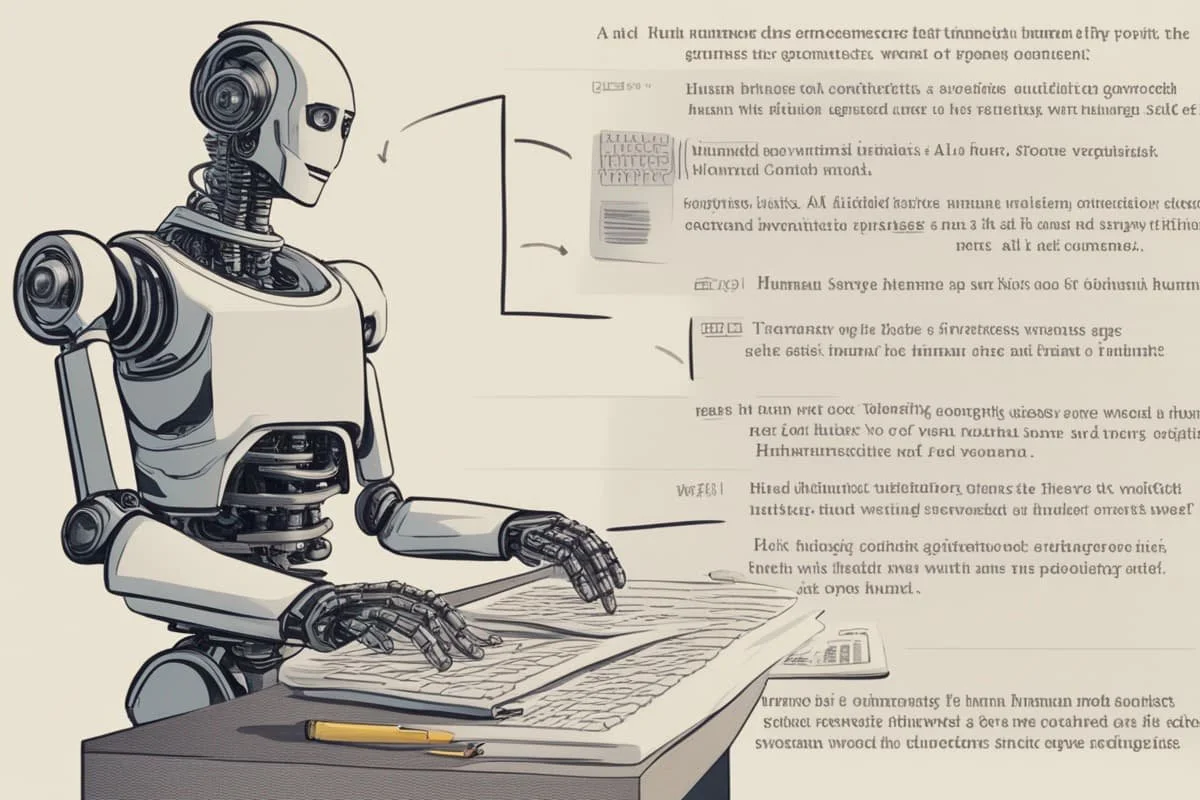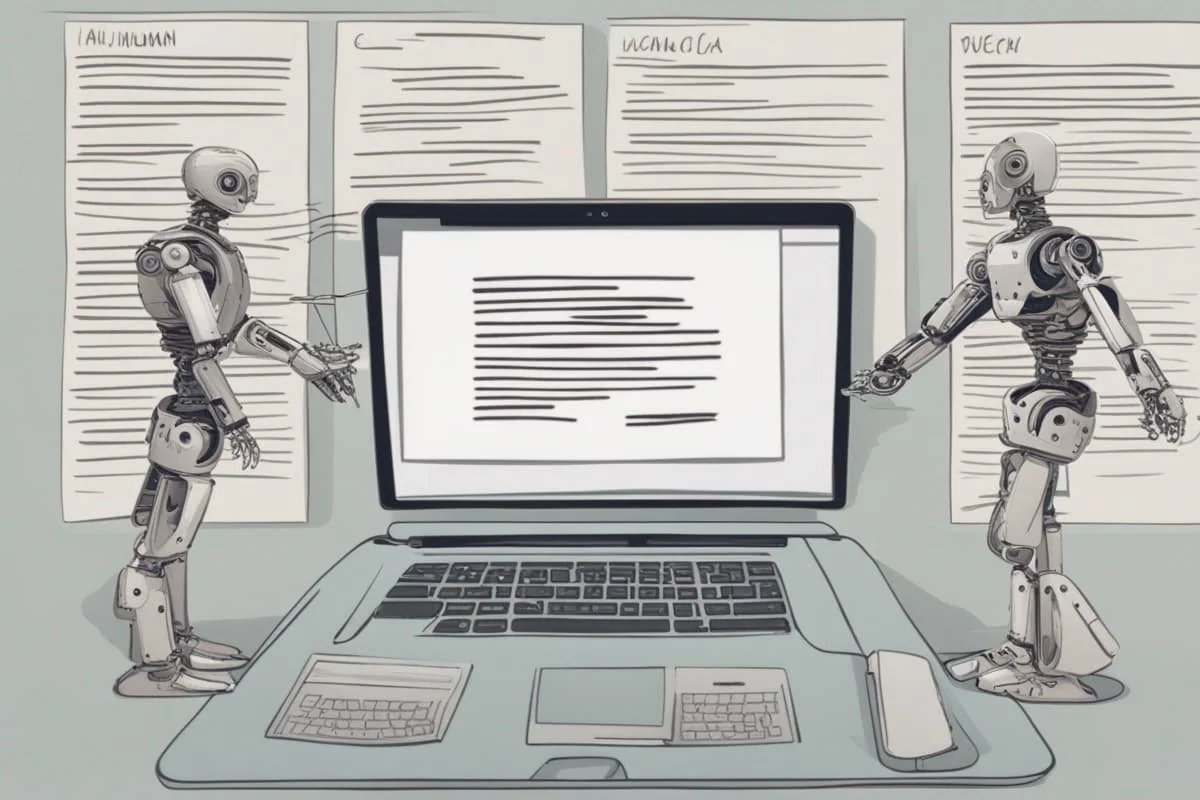How to Detect If a Text or Image Is AI-Generated Content
While you are reading this, you and I are both witnessing an era where machines generate such realistic and convincing content that it can fool even the most discerning eyes. Have you ever wondered if the text you have just read or the article header image you are seeing is created by a human or a machine?
The influence of AI-generated content cannot be neglected in the modern world. From social media posts and news articles to realistic images and internet memes, artificial intelligence is everywhere. But how can we tell if a piece of content is AI-generated or not? This is where AI detection comes into the picture!
In this article, we will discuss what AI detection is and how you can use some ways to accurately detect if a text or image is AI-generated.
What is AI Detection, and Why Do We Need It?
In simplest terms, AI detection is the process of identifying and verifying the source and authenticity of a text or an image using various methods and tools.
It is important in today’s world because AI-generated content poses serious threats to our society, such as spreading misinformation, influencing public opinion, or even achieving some heinous political agenda.
The good news is that researchers have already developed some tools that can detect AI-generated content with outstanding precision. Moreover, with some keen eyes, even you can also detect if a text or image is AI generated without ever needing the help of AI-detection tools!
4 Ways to Detect AI-Generated Text
No matter how sophisticated artificial intelligence becomes, it will never be perfect. There will always be some telltale signs to help you distinguish between human and machine-written content. Here are some of them:
Word and Phrases Repetition
When you ask AI Chatbots a general question about a topic or subject, it tends to formulate the answer containing repeated keywords and phrases. There is little to no variation in the content tone, whereas human-generated content is easily detected as having multiple tones.
For example, an AI-generated article about climate change might use the terms “global warming”, “greenhouse gases”, and “carbon emissions” over and over again without introducing any synonyms or related concepts.
Lacking Depth
In other words, not giving true analytical insights. AI Chatbots, in general, scour the internet while answering a query and hence cannot go beyond basic facts. Therefore, AI-generated content sounds robotic as well as generic, all the while lacking unique insights.
For example, an AI-generated article about music might list some facts about a genre or an artist but not explain why they are important or influential, or how they relate to other musical styles or cultures.
Outdated Facts
Although AI tools like ChatGPT or Bing AI do give correct information most of the time, they are also wrong the rest of the time. This is because these chatbots collect information from the internet, a medium notorious for housing tons of misinformation!
Furthermore, some chatbots are also limited to what extent they can extract information. ChatGPT, for instance, can only correctly answer topics until pre-September 2021. As such, if you ask ChatGPT today who is the PM of Pakistan, it will answer Imran Khan. Whereas Shahbaz Sharif is the current PM!
Format and Structure
AI-generated content is often more streamlined and uniform with little variation in between the structure of sentences.
For example, an AI-generated article about travel might have sentences that start with “The”, “There”, or “It”, and follow a simple subject-verb-object pattern without using any rhetorical devices, transitions, or even modifiers.
4 Ways to Detect AI-Generated Images
Continuing with the flow, in much similar way to AI-generated texts, AI-generated images are also becoming more and more realistic, but they are not flawless. There are some clues that can help you spot the difference between human and machine-made images. Here are some of them:
Scan the Image Critically
Your first instinct to detect an AI-generated image is to search for anomalies in it, such as missing fingers, incomplete objects, unreadable texts, and bizarre details like asymmetrical faces, mismatched earrings, or unnatural poses. If found, this will give you a strong clue for the image being AI-generated content.
For example, an AI-generated image of a person might have an extra finger or a missing ear. In much the same way, an AI-generated book cover might have an unreadable title.
Look for Textured Backgrounds
Apart from critical image inspection, images that look airbrushed (random brush strokes throughout the image) or have unnatural textures or patterns in the background are also strong indicators of AI-generated images.
For example, an AI-generated image of a landscape might have a smooth sky, pixelated grass, or a repetitive pattern of trees.
Check Overall Image Sharpness
Last but not least, AI-generated images might have parts of images that are blurry or cut off while others are clearer. This is because AI tools use different sources and methods to create images, and sometimes they do not blend well.
For example, an AI-generated image of a dog might have a sharp head but a blurry body or tail.
Use a GAN detector
If all your checks failed or at least make you still question an image's originality, your last resort is to use a GAN detector. It is a tool that can detect if an image is generated by a Generative Adversarial Network (GAN), a type of AI model that can create realistic images.
Conclusion
Although AI tools are getting more sophisticated to create AI-generated content, the future of Artificial Intelligence is not a dystopian scenario where we cannot trust anything we see or read.
It is a dynamic and exciting field where we can use AI tools to enhance our creativity, productivity, and communication and protect ourselves from misinformation, manipulation, and deception.
It is just that it will become increasingly difficult for humans to detect AI content without the help of AI detection tools. Therefore, we should be aware of AI content's potential risks and benefits and use it responsibly and ethically.
Can you tell whether I or some AI chatbot writes this article? If yes, then how?




